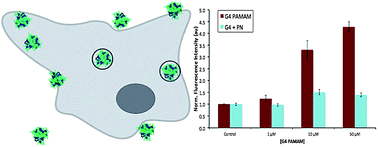Effects of dendrimer oil dispersants on Dictyostelium discoideum
Abstract
Chemical dispersion is a frequently used yet controversial strategy in an attempt to minimize the environmental and economic impact of large-scale oil spills. Previously, cationic poly(amidoamine) (PAMAM) dendrimers have been proposed as novel, biocompatible oil dispersants. Here, we investigate the effect of such dendrimer oil dispersants on the soil amoeba Dictyostelium discoideum, using phenanthrene as a model polyaromatic hydrocarbon. In examining cell culture proliferation and changes in membrane potential, we find that low concentrations of cationic generation-4 PAMAM dendrimers were non-toxic to Dictyostelium discoideum. In comparison, the same low concentration of the primary surfactant in the COREXIT oil dispersant, Tween 80, did display limited acute cytotoxicity. Higher concentrations of dendrimer oil dispersant elicited cytotoxicity due to significant depolarization of the cell membrane resulting from the uptake of highly cationic PAMAM dendrimers. Cellular uptake of cationic PAMAM dendrimers was confirmed by a cellular association experiment conducted at room temperature and 2 °C, using fluorescence imaging. The uptake and corresponding membrane depolarization was found to be significantly inhibited by the presence of phenanthrene within and around the periphery of the dendrimers. This study offers new insight into the environmental implications of oil dispersants.


 Please wait while we load your content...
Please wait while we load your content...